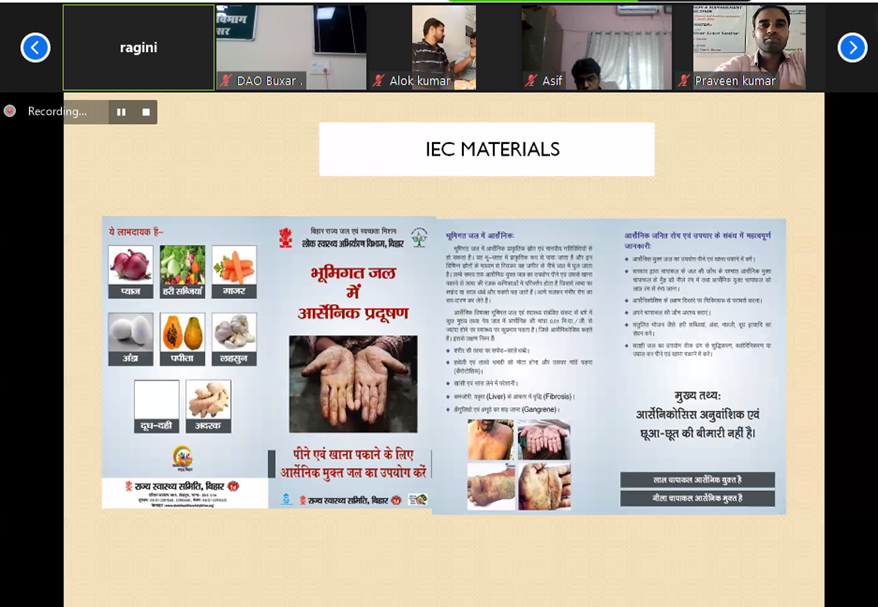From 12-16 October, the Arsenic Knowledge and Action Network of SaciWATERs organised a capacity-building programme on mitigation of arsenic in drinking water in Assam & Bihar Districts (India) through an online platform. Supported by the European Union and Cap-Net, the activity was developed in three sessions.
The objective of the first session of the programme was to understand technologies for the reduction of arsenic and to raise awareness of existing funding programmes. The training aimed to increase the capacities of senior engineers, assistant engineers and junior engineers or civil servants of a similar rank from different departments, CSO representatives, etc. The meetings in Bihar and Assam provided opportunities where government officials and CSO representatives spoke as experts on the panel. Sessions 2 and 3 presented the findings of officials from the water, health, nutrition and other relevant areas of expertise on state-level water quality policies. CSO and NGO officials share their knowledge of the realities on the ground, the opportunities, gaps and challenges they all face in their work on the ground.
In India, around one million people are at risk of arsenic-contaminated drinking water. The concentration of arsenic is higher in the floodplains of Ganga and Brahmaputra. The spread of arsenic-contaminated groundwater occurs mainly in the states of West Bengal, Jharkhand, Bihar, Uttar Pradesh, Assam, Manipur and Chhattisgarh. Dealing with arsenic is much more demanding compared to other pollutants because it is colourless, odourless and tasteless. Testing of the water is required to determine the degree of arsenic contamination in the water. Similarly, its effects on human health are not immediately visible. Besides the previously mentioned challenges, there is an urgent need for capacity-building programs, especially for front-line workers.
The training program format was online and it was successful in bringing several stakeholders to a common platform with a common goal of mitigating arsenic problems in drinking water and public health. Knowledge sharing of potential technologies by experts among various stakeholders also took place. The issues brought up by the experts can be incorporated while designing the policies to mitigate water quality issues, and the importance of community engagement in mitigating arsenic problems in the affected areas. The SaciWATERs Arsenic Knowledge and Action Network along with Cap-Net network will continue its initiative to bring diverse stakeholders together; for the common goal of solving water quality issues related to arsenic contamination.

